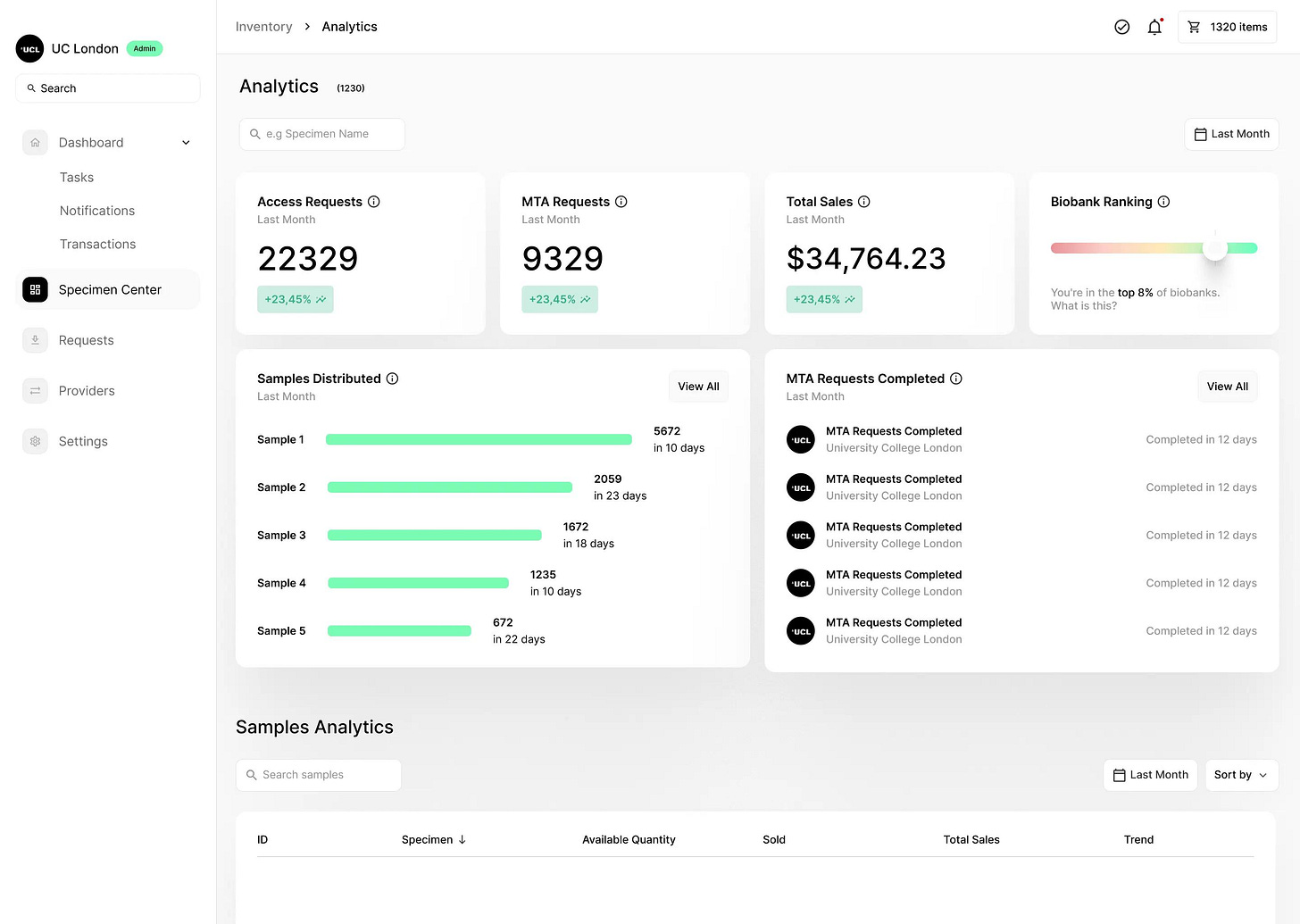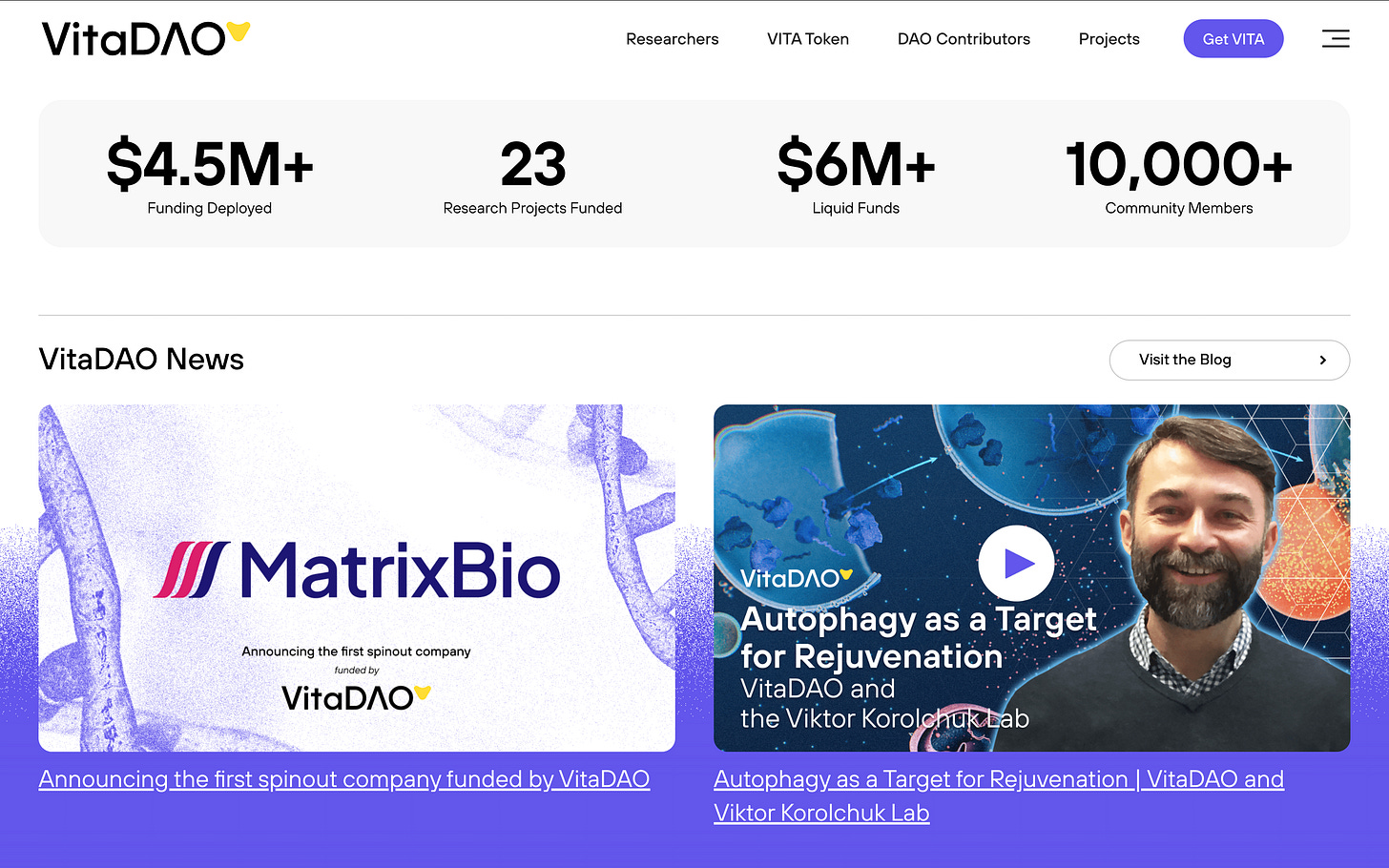【AminoChain】L2 chain that connects medical institutions to seamlessly integrate medical data and ensure transparency / a16z's first DeSci investment / @Amino_Chain
DeSci area is about to expand.
Good morning.
Mitsui from web3 researcher.
Today I researched "AminoChain".
🟢What is AminoChain?
💊a16z first DeSci investment partner
💬What is the market and potential for DeSci?
🟢What is AminoChain?
"AminoChain" is a L2 chain for the on-chain healthcare application ecosystemThis project builds aIt will connect medical institutions in the Enterprise to enable seamless processing of medical data and provide transparency to patients on how their biosamples are used.
Each year, thousands of people provide blood, saliva, and cancer tissue samples to the medical community to help researchers develop new drugs.
Today, however, the data collected from these highly sensitive, personal samples and data is one-way and fragmented.
The donor of a biological sample is asked if the sample can be used for scientific research, a consent form is signed, and the researcher receives the biological sample.The process of the donated sample is then a black box for the donor, and coupled with this situation, the consent rate at major research institutions is currently low at 25%.
While this data has great potential to advance medical science and improve patient care, its centralized storage and management (1) is a major drag on scientific progress and improved patient outcomes, and (2) hinders data provenance and user consent management.
This is why AminoChain was created.
AminoChain is a technology that allows corporate healthcare organizations to connect and build healthcare applications, providing transparency that allows patients to finally know what is happening with their donations to society.
Healthcare organizations install a software package called "Amino Node".This is integrated into the technology stack (EMR, inventory management software, data capture software, etc.) that already exists within the institution.
While data is self-managed on a particular institution's servers, the "Amino Node" coordinates and standardizes data into a common format, allowing it to interoperate with a network of collaborators.Based on this, developers can retrieve data from many healthcare organizations and build any number of patient-centric applications.(The technology stack for the chain was not publicly available at this time.)
The first application built is a peer-to-peer biosample marketplace called Specimen Center.It was developed by the AminoChain team.
The "Specimen Center" integrates biobank inventories and related data into a common format, allowing research samples to be searched and requested across a network of providers.
Biobanks are facilities that store human tissue for use in scientific research and clinical applications, and are used by researchers seeking to develop treatments for new or existing diseases or to study population health to prevent future outbreaks of infectious diseases.
However, biobanks severely lack interoperability, and it takes an average of eight weeks of email correspondence for researchers to find the samples they need, sign a license agreement, and have the samples shipped.
With the Specimen Center, biobanks can authorize researchers and collaborators to query their sample collections, and researchers and collaborators alike can query available research assets.Users can streamline licensing agreements, track the use of samples and data, and maintain the complete provenance of biosamples throughout the interoperable biobank network.
In addition, any biobank can enable the ability for patients and sample donors to track where their samples are sent in the network, learn from the information generated from the samples, and earn revenue each time a sample is commercialized or sold.
In short, it provides transparency to patients and sample donors and allows them to share in the profits.
💊The a16z first DeSci-funded
AminoChain will be released in September 2024, and upon its release, the company also announced a $5 million seed round of funding.The round was led by a16z crypto with participation from Cercano.This brings the cumulative amount raised to $7 million.
This is a16z's first investment in the DeSci (Distributed Science) area, and the first meeting was at the a16z CSX (Accelerator Program) held in London last year.From there, we continued to communicate with the founders, and after empathizing with their enthusiasm and the potential of the domain, we decided to invest in the company.
AminoChain seeks to build a common foundation for data in the healthcare industry, and the applications presented at the time of this release are just the first example.
Its mission is to streamline clinical research and development, improve partnerships between academia and industry, and above all, ensure that patients are the first to benefit from their participation in scientific research, ultimately creating the world's first HIPAA and GDPR compliant blockchain for the healthcare industry.This is a platform where any company, network, non-profit, or lone scientist can obtain and build compliant medical data.
One example of one of the following applications was the Donor Potal Demo.
💬What is the market and potential for DeSci?
AminoChain, this was a very interesting project.I am not that familiar with the challenges specific to the healthcare industry, but I understand that the challenge of data silos exists in all industries to a certain degree, so I agreed with your sense of the issues.
Resolving this data silo problem, not only in the healthcare industry but in general, may be good for streamlining the user experience and promoting innovation, but it also eliminates a company's competitive advantage.From a company's perspective, the data accumulated only in its own database is the result of its past corporate activities and its competitive advantage.
However, I have a feeling that this kind of trend will spread to all industries in the future, where data will be standardized, and companies will compete with each other through applications or become a data provider and secure a new revenue source through licensing.
Among these, I felt that the medical industry is one of the easiest industries to logically move forward with and has a large number of challenges, since samples are inevitably needed for R&D. (Of course, the reality is that each hospital has its own unique needs.(Of course, in reality, there may be a lot of traditions among hospitals and industry associations, but...)
Although we have not yet heard that much about this DeSci area, including the medical industry, it is likely to attract a great deal of attention in the future.
The first investment by a16z in AminoChain in the DeSci area has become a hot topic, but it was actually a16z's blog written in September 2022 that triggered this DeSci wave in the web3 industry.
In this blog, mentioning a reference toDeScipublished in Nature in 2021, he explains that many researchers are having trouble getting funding.He explained that many researchers are struggling to obtain funding, and that these problems could be solved by using open science, DAO-type, and blockchain.
Open innovation, which uses the knowledge of large companies and startups to create innovation, has become a hot topic in recent years, and the field of open science, where knowledge is more open and collaborative research is also gaining momentum.
Blockchain can be very useful in organizing this traffic.It will allow us to create a truly global laboratory for managing the origin of data, lending licenses, managing and paying fees, managing who has provided input, managing copyrights on collaborative works, and so on.
The most famous exampleVitaDAOis perhaps the most famous.More than 10,000 people have already joined the project, helping 23 projects raise more than $4.5M.
DeSci is gradually expanding, and this investment by a16z may accelerate the trend worldwide.I would like to research this market again and report on it somewhere!
This is the research for AminoChain!
🔗Reference/image credit: HP / X
Disclaimer:I carefully examine and write the information that I research, but since it is personally operated and there are many parts with English sources, there may be some paraphrasing or incorrect information. Please understand. Also, there may be introductions of Dapps, NFTs, and tokens in the articles, but there is absolutely no solicitation purpose. Please purchase and use them at your own risk.
About us
🇯🇵🇺🇸🇰🇷🇨🇳🇪🇸 The English version of the web3 newsletter, which is available in 5 languages. Based on the concept of ``Learn more about web3 in 5 minutes a day,'' we deliver research articles five times a week, including explanations of popular web3 trends, project explanations, and introductions to the latest news.
Author
mitsui
A web3 researcher. Operating the newsletter "web3 Research" delivered in five languages around the world.
Contact
The author is a web3 researcher based in Japan. If you have a project that is interested in expanding to Japan, please contact the following:
Telegram:@mitsui0x
*Please note that this newsletter translates articles that are originally in Japanese. There may be translation mistakes such as mistranslations or paraphrasing, so please understand in advance.










